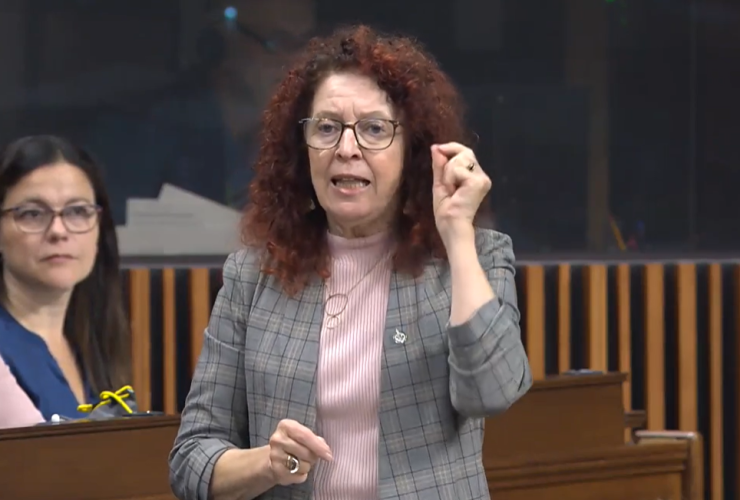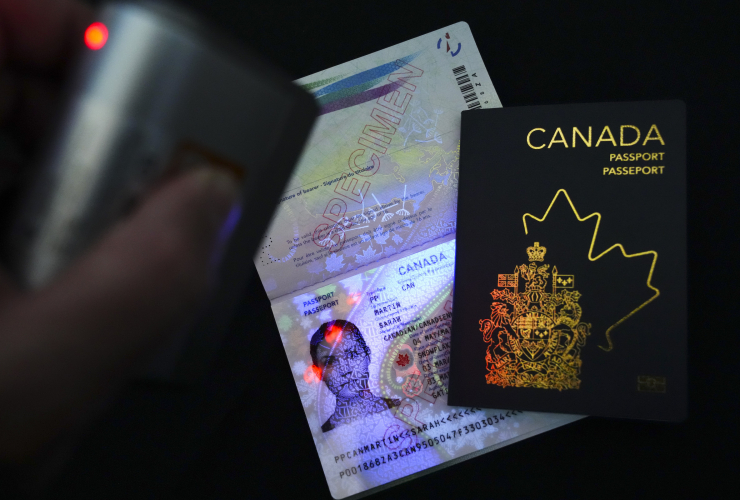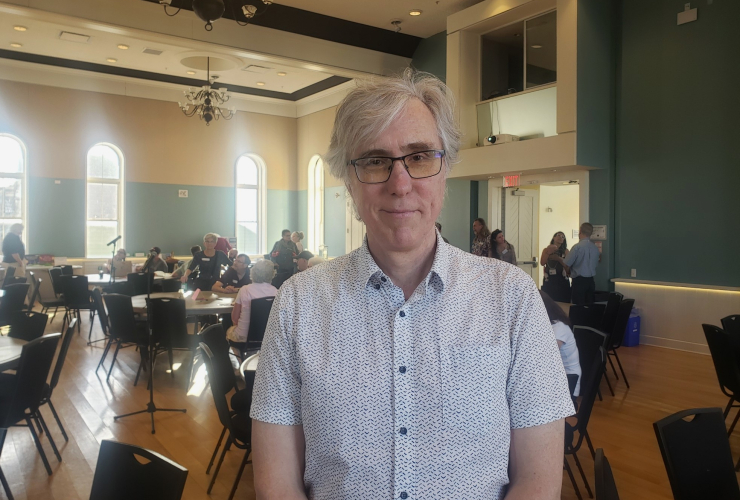In mid-February, one year after Russia’s full-scale invasion of Ukraine, the Finnish internet was hit with a deluge of near-identical messages chastizing Finland’s ambitions to join western security alliance NATO.
On social media platforms like Twitter, an army of users parroted the same sentence: “NATO can’t save Finland.” Some posts received tens of thousands of views in the lead-up to the country’s admission to NATO on April 4.
But there was a catch: the sentence that spread like wildfire was grammatically incorrect. In the Finnish language, there are two verbs that mean “to save.” One means to rescue, and the other means to save in the form of recording or storing. The viral phrase used the latter.
The erroneous use of the verb, alongside the proliferation of seemingly fake accounts tweeting the slogan — many were only a few months or weeks old — alerted the Finnish public that the viral message was not the product of an organic uprising at home. The origin of the campaign hasn’t been determined, but many believe it was an act of disruption, or disinformation warfare, likely stemming from pro-Kremlin actors using bots, paid trolls and influencers relying on Google Translate to carry out the failed campaign.
What began as an effort to stoke discord in Finnish society and discredit Finland’s efforts to join NATO became a running joke in the nation, inspiring a flood of wisecracks and memes. The country’s public broadcaster Yle published a story in late February with a headline that read: “Finnish grammar foils pro-Russia trolls.”
Finnish is one of the rarest languages in the European Union, with only 5.5 million speakers, making lexical errors relatively easy to spot among native speakers.
The Finns’ ability to spot foreign influence also comes from the country’s years-long integration of media literacy into its national educational system, a strategy experts say inoculates Finns against fake news.
For the last five years, Finland has ranked first among 35 European countries in resilience against misinformation and disinformation “due to the quality of education, free media, and high trust among people,” according to the Open Society Institute (OSI), a civil society-focused non-governmental organization. High-quality education teaching digital literacy and critical thinking is the “best all-round solution — [the] prerequisite for tackling the negative effects of fake news,” the report’s authors wrote. Now, as Russia intensifies its information warfare, Finland is simultaneously gearing up to become the most media-literate country in the world by 2030 and doubling down on digital-focused media education efforts.
Education as the first line of defence
In the last decade, media literacy built upon critical thinking has become a vital, mandated part of Finland’s core national curriculum. Teachers integrate the concepts into every subject from K-12, meaning Finnish students are exposed to media literacy from the start of their education, forming a first line of defence against disinformation.
“Every teacher, whether they are teaching kindergarten or Grade 12, mathematics, geography or physical education … must think how to incorporate it into their own subject and teaching,” says Leo Pekkala, director at the National Audiovisual Institute of Finland (KAVI), which spearheads the country’s media education. Finnish teachers, who must have a master’s degree to teach, develop their own lesson plans and teaching methods. The system works because Finnish teachers are “highly valued and trusted in our society,” Pekkala says.
At Helsinki’s Vartiokylä Comprehensive School, Mira Pelkonen, a teacher of Finnish language and literature, curates her lessons by focusing on digital tools and platforms used by news media and content creators. Finland’s national curriculum stipulates media literacy is a core competency of Finnish language and literature, on par with reading, writing, speaking and grammar.
Pelkonen’s seventh-graders study the basics of digital media, like social media’s algorithm-driven feeds and advertising, and laws regulating online content in Finland. They also learn to use green screens, a common practice in filmmaking where a subject can be superimposed onto digitally created backgrounds. “Students learn how easy it is to make fake news by using modern technology,” she says.
Finland has long been a trailblazer in media literacy education. But the Baltic country intensified its media literacy efforts in the aftermath of Russia’s 2014 annexation of Crimea. Russia’s actions reconfirmed that the Kremlin was gearing up for physical battles and escalating its digital information warfare via online campaigns to spread pro-Kremlin narratives and foment suspicion toward the EU and NATO.
In the next few years, Finland launched an anti-fake news initiative for students, politicians and journalists, and revamped the national education system to prioritize critical thinking. The government was “visionary” in mobilizing the populace to understand their role in the disinformation fight, years before Russian election meddling became a mainstream topic, says Jessikka Aro, author of Putin’s Trolls: On the Frontlines of Information War Against the World.
Now, Finnish students like Pelkonen’s eighth-graders dive deep into studying false news articles. They investigate how social media can be manipulated to further certain narratives, like the one pro-Kremlin actors pushed after the recent drone attack over the Kremlin, using authentic images and videos to assert the incident was an act of Ukrainian “terrorism” intended to kill Russian President Vladimir Putin.
Finland’s public broadcaster Yle — akin to Canada’s CBC — plays a major role through its content and innovative teaching tools. Every weekday, Yle releases three news videos and ready-made media literacy tasks for students from grades 1 through 12 via its Triplet platform. Over 26,000 teachers, roughly half of Finland’s elementary and secondary school educators, use the service.
Pelkonen’s eighth-grade students watch a Yle video that explains the concept and different types of disinformation and the tools they can use to discern whether online content is fake or legitimate, like reverse image search programs.
The exercises prompt students to think critically about the information sources they’re exposed to on the internet, Pelkonen says. At the same time, the digital tools and critical thinking they’re taught are linked to their study of broad concepts like censorship and advertising. “We encourage them to think about why freedom of speech is so important — but that with every right comes responsibility,” she says.
Beyond K-12
Finland’s media literacy education stretches beyond standard K-12 streams. Government agencies like KAVI work with 1,000 organizations — from news media to NGOs — to bring media literacy education to all citizens and in different formats.
In 2019, Yle News Lab, a six-person team of journalists, machine learning experts, software designers and developers, created an online game called Troll Factory where players act as disinformation operatives working at the Internet Research Agency, the Kremlin-linked “troll” factory. Through an interactive chat, users choose messages and memes taken from real social media posts to amplify their online influence in the game. The goal? To spread fear and distrust through emotion-driven disinformation and misinformation centred on divisive issues like immigration.
The experimental educational tool, used by educators and accessible to the public, “explained the trolling phenomenon and helped expose the methods and motivations behind information operations. It showed there are people who work to drive those narratives and don’t actually believe what they post on social media,” says Jaakko Lempinen, head of customer experience at Yle. The European Journalism Centre and Google News Initiative awarded Yle with the News Media Prize for promoting media literacy.
At Savo Vocational College, a trade school in Kuopio in northern Finland, Anne Kolehmainen employs a diverse toolkit to weave media literacy into her forestry and construction lessons for older teenagers, many of whom struggle with concentration issues and dyslexia. Kolehmainen is fond of deploying another Yle game called Troll Bunker, where players are locked in a digital escape room and must correctly choose whether news and photos spread online are real or fake. The gamification of media literacy education makes the concept digestible for students uninterested or unable to read long texts, she says.
Meanwhile, Finnish NGOs target specific demographics like senior citizens and new immigrants who might have a weaker grasp on new technologies and the Finnish language. Helsinki-based SeniorSurf, a state-funded NGO founded in 2013, offers one-on-one digital literacy and training for residents 65 years and older. Last year, over 500 volunteers conducted 15,000 hours of such meetings for hundreds of seniors, say Tiina Etelämäki, chief specialist, and Nina Ziessler, expert at SeniorSurf.
Finnish citizens’ resilience against disinformation, as evidenced by their ability to debunk the viral NATO messaging earlier this year, shows that “our system of media literacy education is faring quite well,” Pekkala says. But with the digital media and disinformation landscape continually changing and advancing, “we can’t stop, relax and say we’ve done our job. We need to keep improving and keep up with changes.”
Sounds like something we need
Sounds like something we need here in our education system as well. I am just amazed how many people believe conspiracy theories, disinformation and misinformation spewed on social media. Mind you, the mainstream media in Canada are not that innocent when it comes to publishing unbiased items either.
I would say most countries
I would say most countries will find it hard to muster political impetus for this kind of thing. There are too many groups with too much power who lose if the citizenry are well educated and skeptical. Mainly, though not exclusively, the political right and most big money interests.
Dare one say that the reason
Dare one say that the reason these programs are possible and strongly supported in Finland is that the country operates under a system of socialism?
"In the last decade, media
"In the last decade, media literacy built upon critical thinking has become a vital, mandated part of Finland’s core national curriculum. Teachers integrate the concepts into every subject from K-12"
We need to bring this to Canada.
What an great innovation,
What an great innovation, something we will never see in North America. Memorable quote from George Carlin, decades ago....
“but I'll tell you what they don’t want: They don’t want a population of citizens capable of critical thinking. They don’t want well informed, well educated people capable of critical thinking. They’re not interested in that. That doesn’t help them. Thats against their interests. Thats right. They don’t want people who are smart enough to sit around a kitchen table to figure out how badly they’re getting fucked by a system that threw them overboard 30 fucking years ago.”






Comments